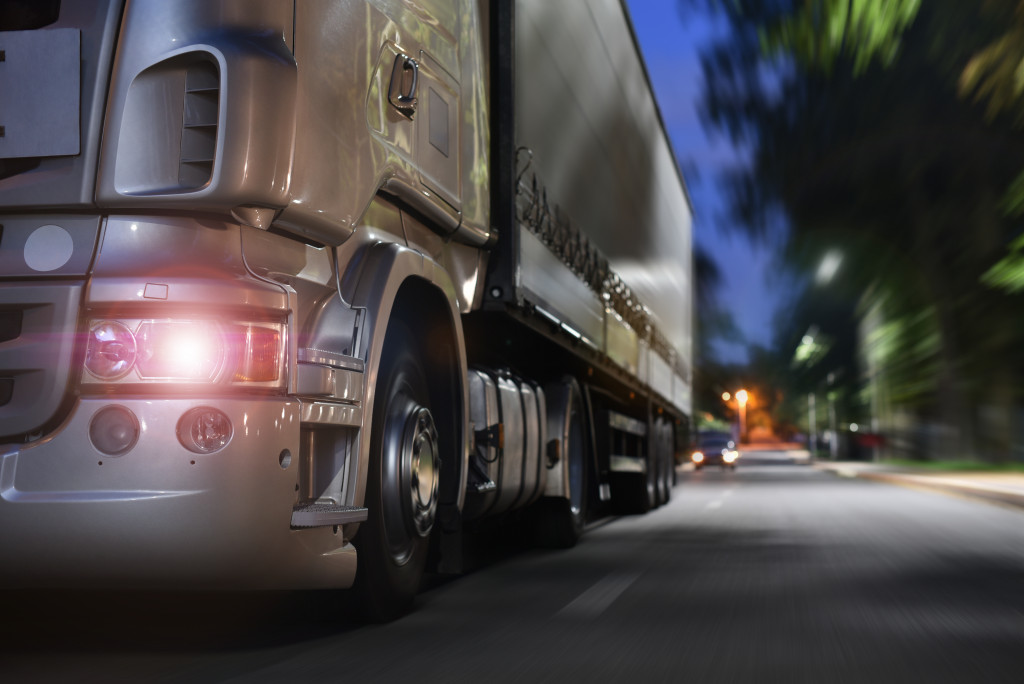Purchasing a new truck for your business is no easy feat. When you consider things like environmental impact, fuel efficiency, innovation, and your freight, you can’t simply choose the cheapest model and expect it to meet your expectations. For one thing, cheap and old models may not pass the latest emission standards, and for another, they’re not usually fuel-efficient.
And it’s not like you can’t raise your standards either. With technologies like electric-powered vehicles, platooning, and the Internet of Things, settling for outdated trucks will only make you lag behind and miss out on a lot of benefits these smart solutions provide. Besides, your working capital business loan will bear more fruit if you use it equipment that will have lasting perks, such as a high ROI.
That said, here are the things to look for when choosing a truck for your first fleet:
The Right Freight
There are different types of freight, each with a specific purpose, financial benefit, and working conditions that suit it. For a beginner in the industry, the following are your best options:
-
Dry Van or Refrigerated Freight
These are the most common types of freight available, and the top choice of most starters. They don’t require much-specialized training, and the skill level you need in hauling either is more or less the same.
The biggest benefit of a dry van or a refrigerated freight is that you don’t have to exert tremendous effort to secure your load it in and haul them. As for the pay, there’s a bit of a difference between the two, particularly in home time and consistency of freight throughout the year. Dry van companies tend to have a wider range of home time options, whereas refrigerated companies usually require their drivers to stay out three or four weeks at a time, then give them the same period of days off.
Dry van should be your pick if you’re shipping retail goods, like clothing or novelty. On the other hand, if you ship food products, especially perishable ones, refrigerated freight is for you.
-
Flatbed
A flatbed can also suit starters, because a truck driver straight out of school can already drive it, at least in the U.S. However, handling it is riskier than handling a dry van or a refrigerated freight. The physical demands of a flatbed are taxing; the tarps alone can weigh over 100 pounds (ca. 45 kg), and drivers and cargo handlers usually have to walk on top of the loaded trailer, which might have safety hazards.
But a flatbed is a good choice if you want to ship only on the weekdays because flatbed freight normally only operates on weekdays. As for the salary of your drivers, though, you may need to give them extra because of the — quite literally — heavier workload.
-
Dry Bulk Tanker
For shipments such as flour, sugar, or sand, a dry bulk tanker is the most suitable. Labor will be more demanding, though, because unlike a dry van, your cargo personnel themselves should unload the freight, hook up the hoses, and vent out the tank.
Dry bulk tanker drivers can also get a day off on weekends, a schedule that’s most convenient for a startup fleet company.
Technologies and Innovations to Consider
 Now that you have a clear picture of the type of freight you should choose, let’s tackle the tech specifications of your truck next. Here are the top ones worth considering:
Now that you have a clear picture of the type of freight you should choose, let’s tackle the tech specifications of your truck next. Here are the top ones worth considering:
-
Electric Trucks
Nikola, Einride, and luxury automakers Volkswagen and Mercedez-Benz have all started manufacturing electric trucks. But apart from a cleaner engine, they’re also equipped with top-of-the-line technologies such as lane-assist and assisted braking features. The more advanced trucks are said to break down less often, requiring less frequent repairs.
However, there’s a catch in all-electric vehicles, and that’s a limited travel range and travel infrastructure. But since electric trucks are still way beyond your budget range, you don’t have to purchase them now, though they’re a worthy consideration for the future.
-
Platooning
Platooning uses telematics technology, which is the sending, receiving, and storing of information via telecommunications devices, so that you can control your trucks using it. It allows you to save costs on fuel and emission, and improve the safety of your driver and other road users as well. Platooning is not yet widespread, though, but it could soon be a common feature on European roads.
-
The Internet of Things
With the IoT, you can install a network of sensors throughout your truck and monitor everything, from tire pressure to cargo stability. Kuehne + Nagel, one of the world’s biggest logistics companies, is already using this technology together with a cloud-based platform to provide shippers with real-time information, including weather reports, location, and condition of the freight. As a result, manpower is reduced, because AI is pretty much in charge of all the monitoring and communicating.
With any of these smart solutions in your requirements, you’d be able to find the best truck with the best tech features for your business. Your initial investment might be hefty, but it’ll prove profitable — not to mention more eco-friendly — in the long run.

